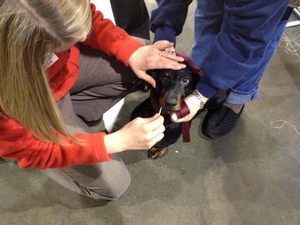I like to use this time of year to reflect on the challenges and accomplishments of the past year. Paw Print Genetics (PPG) was founded only a few short years ago, launching our first set of canine disease tests in 2013. Our commitment to excellence in both testing accuracy and customer service quickly propelled us to the top of the canine testing industry. In no other testing laboratory can you find the highly skilled staff of veterinarians and PhD geneticists eager to help answer your questions and guide you to the useful and informative testing that you need for your breeding program. Aiming to be the best, our web-based ordering system is unparalleled in the industry. This didn’t happen by chance, as we continuously talked to our customers about how we could improve our systems and deliver a product that was user friendly and met their high standards, comparable to their own breeding principles.
This year was not without its challenges, but overcoming obstacles makes us stronger. We ended litigation over PRA-prcd and CEA, allowing us to be listed as an approved laboratory with the Orthopedic Foundation for Animals. Fighting for our customers’ rights to have a ...






